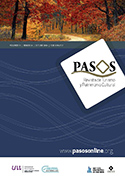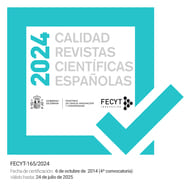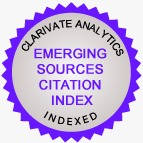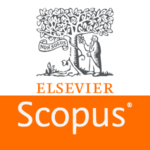Turismo psicodélico no México, uma tendência próspera.
DOI:
https://doi.org/10.25145/j.pasos.2018.16.072Palavras-chave:
Indústria do turismo, Psicadélico, Neo-chamanismo, Neocolonialismo, Descolonização.Resumo
Este documento mostra como recentemente um fluxo considerável de turistas está chegando ao México para experimentar novos encontros na indústria do turismo. Apesar da falta de uma estrutura adequada de atendimento no setor, o consumo de plantas e substâncias psicodélicas entre os turistas modernos está surgindo em países como o México e outros países da América Latina. O objetivo deste estudo é demonstrar como uma nova tipologia do turismo está crescendo no México. Os materiais utilizados foram de natureza qualitativa, além de entrevistas, algumas das quais foram aplicadas à população local em 2016. Os resultados encontrados foram interessantes, devido ao crescente número de pessoas que querem experimentar novas experiências em torno das eco-áreas e também estar em contato com os povos indígenas.
Downloads
##plugins.generic.pfl.publicationFactsTitle##
##plugins.generic.pfl.reviewerProfiles## Indisp.
##plugins.generic.pfl.authorStatements##
##plugins.generic.pfl.indexedIn##
-
##plugins.generic.pfl.indexedList##
- ##plugins.generic.pfl.academicSociety##
- PASOS. Revista de Turismo y Patrimonio Cultural
- ##plugins.generic.pfl.publisher##
- Instituto Universitario de Investigación Social y Turismo. Universidad de La Laguna (España) - Instituto Universitario da Maia ISMAI (Portugal)
Referências
Acero, I. 2016. Permiten a pueblos indígenas uso y transporte de peyote. La Jornada. Retrieved from: http:// www.lja.mx/2016/01/permiten‑a‑pueblos‑indigenas‑uso‑y‑transporte‑de‑peyote/
Aguilar, M. 2015. Lugares para probar hongos alucinógenos. Cultura Colectiva. Retrieved from: http://culturacolectiva. com/lugares‑para‑probar‑hongos‑alucinogenos/
Alper, K. 2001. Alkaloids Chem Biol. Retrieved from: http://www.sciencedirect.com/science/article/pii/S0099959801560058.
Arregi, J. 2011. Chamanes de plástico, colonialismo intelectual y apropiación intelectual entre movimientos de nueva era. EUMED. Retrieved from: http://www.eumed.net/rev/cccss/12/jia2.htm
Bain, K. 2015. Meet magic mushroom, ayahuasca and ibogaine enthusiasts at L.A’s first visionary convergence. LaWeekly. Retrieved from: http://www.laweekly.com/arts/meet‑magic‑mushroom‑ayahuasca‑and‑ibogaine‑enthusiasts‑at‑las‑first‑visionary‑convergence‑6089924
Barsuglia, J. 2016. Psychedelic Research with Ibogaine and 5‑MeO‑DMT: An Interview with Dr. Joseph Barsuglia. West T. (Eds.) PsychedelicTimes.com. Retrieved from: http://psychedelictimes.com/iboga/psychedelic‑research‑with‑ibogaine‑and‑5‑meo‑dmt‑an‑interview‑with‑dr‑joseph‑barsuglia/
Bastianns, E. 2004. Life after Ibogaine. An exploratory study of the long‑term effects of ibogaine treatment on drug addicts. Science Internship Report. Vrije Universiteit Amsterdam. Faculty of Medicine. Retrieved from: http://www.ibogaine.desk.nl/ibogaine_udi_bastiaans.pdf
Bernard‑Mena, A. 1998. Turismo mistico‑esoterico en México. Estudios y Perspectivas en Turismo. Retrieved from de http:// www.estudiosenturismo.com.ar/search/PDF/v7n3y4.pdf
Bocco, G. 2014. Centro de Investigaciones en Geografía Ambiental de la UNAM. Retrieved from http://www. sinembargo.mx/29‑02‑2012/ 165749
Broze, D. 2015. From Psilocybin to MDMA: Researchers Are In the Throes of a Psychedelic Revival. Mint Press News. Retrieved from: http://www.mintpressnews.com/from‑psilocybin‑to‑mdma‑researchers‑are‑in‑the‑throes‑of‑a‑psychedelic‑revival/ 210550/
Burge, B. 2015. The psychedelic science and medicine in the xxi century. Drogas Mexico‑Brasil. Multidisciplinary Association for Psychedelics Studies. MAPS. (Eds.) Horacio Guevara. Retrieved from: http://drogasmexicobrasil. mx/index.php/2015/10/15/the‑psychedelic‑science‑and‑medicine‑in‑the‑xxi‑century/
Castañeda, C. 1974. Las enseñanzas de Don Juan. México. Fondo de Cultura Económica.
CDI [Comisión Nacional para el Desarrollo de los Pueblos Indígenas] 2004–2007. “Mazatecos ‑ Ha shuta Enima”. Información: Los pueblos indígenas de México (in Spanish). CDI. Archived from the original on 2007‑06‑09. Retrieved 2007‑05‑02.
Clancy, M. 2001. Exporting Paradise: Tourism and Development in Mexico. New York: Pergamon.
CNN November, 2015. El peyote va por el camino legal de la marihuana. Retrieved from: http://www. cnnexpansion.com/economia/2015/11/11/el‑peyote‑va‑por‑el‑camino‑legal‑de‑la‑marihuana
Cohen, E. 2005. Major trends in contemporary tourism. The Hebrew University of Jerusalem. Department of Sociology and Anthropology. Retrieved from. http://revistas.ucm.es/index.php/POSO/article/view/ POSO0505130011A/22986
Crest 2015. The Case for Responsible Travel: Trends and Statistics. Retrieved from https://ecotourism.app. box.com/s/rxiyp65744sqilmrybfk8mys3qvjbe9g
Crick, M. 1989. "Representations of International Tourism in the Social Sciences. Apostolopoulos (pp. 15-43)"., Y., Leivadi, S. & Yiannakis, A. (Eds.), Sociology of Tourism. New York: Routledge
De la Garza, R; Ruiz, M. Sueño y éxtasis visión. 2012. Chamánica de los Nahuas y los Mayas. México. Universidad Nacional Autónoma de México. Instituto de Investigaciones Filológicas. Fondo de Cultura Económica.
Demanget, M. 2001. Reconstruction of the shamanic space and mystical tourism in the Mazatec region (Mexico), Biblioteca shamanistica ‑ ISSSR, n° 10, 2001, p. 305‑330 , Articles et actes dans des colloques et chapitres d’ouvrages,
Esquivel, S. 2014. Terapia ancestral del sapito otac (bufo alvarius) de Sonora, México con el Dr. Octavio Retting Hinjosa en Valencia (Trincheras). Retrieved from: http://allevents.in/events/terapia‑ancestral‑del‑sapito‑otac‑bufo‑alvarius‑de‑sonora‑m% C3%A9xico‑con‑el‑dr‑octavio‑rettig‑hinojosa‑e/ 628085833881073
Estrada, M. 2009. El cambio sociocultural del rito en el consumo de hongos alucinógenos en Huahutla de Jiménez, Oaxaca: de los fines curativos a los lúdicos para su comercio. Mind Suf. Retrieved from: http://www. mind‑surf. net/drogas/peyote/Ponencias/Gabriel%20Estrada%20cambio%20sociocultural%20del%20 rito.pdf
Feinberg, B. 2009. A Symbol of Wisdom and Love? Counter‑Cultural Tourism and the Multiple Faces of Maria Sabina in Huautla, Oaxaca. Retrieved from: https://books.google.com.mx/books?id=s‑‑lFZ5RKwcC& pg=PA93&lpg=PA93&dq=Tourism+and+the+Multiple+Faces+of+Maria+Sabin a+en+Huautla&source=bl&ots=fhLU9sYFkI&sig=6GuZ1pjta4klBhDhSCoRcQn3bLs&hl=es‑419& sa=X&ved=0ahUKEwjWqv6hv6DLAhUil4MKHbxpDR4Q6AEIITAB#v=onepage&q=Tourism%20 and%20the%20Multiple%20Faces%20of%20Maria%20Sabina%20en%20Huautla&f=false
Grunwell, J. 1998. Ayahuasca Tourism in South America. Newsletter of the Multidisciplinary Association for Psychedelic Studies (8). pp. 59‑62. Retrieve from: https://www.maps.org/news‑letters/ v08n3/08359gru.html
Gómez, S. 2005. El Desarrollo Turístico Imaginario. Ensayos sobre un destino mexicano de litoral. Universidad de Guadalajara. Retrieve from: http://www.cuc.udg.mx/sites/default/files/publicaciones/2015%20‑% 20 Desarrollo,%20crisis%20y%20turismo.pdf
Griffiths, R. et al. 2006. Psilocybin can occasion mystical‑type experiences having substantial and sustained personal meaning and spiritual significance. Springer‑Verlag. DOI 10.1007/s00213‑006‑0457‑5. Retrieved from: http://www.csp.org/psilocybin/Hopkins‑CSP‑Psilocybin2006. pdf
Héau, C. 2006. El ecoturismo como sustitio problemático de las responsabilidades redistributivas del estado. Revista Nuevas Tendencias en Antropología. Escuela Nacional de Antropología e Historia ‑ México. Retrieved from: http://www.revistadeantropologia.es/Textos/N2/El%20ecoturismo%20como%20 sustituto%20problematico.pdf
Hofmann, A. Preface. Moksha. Aldous Huxley’s Classic Writings on Psychedelics and the Visionary Experience. Michael Horowitz & Cynthia Palmer (Eds.) Park Street Press. Rochester, Vermont.
Huxley, A. 2014. Las puertas de la percepcion. Cielo e infierno. Editores Mexicanos Unidos.
Jesso, J. 2013. Decomposing the shadow. Lessons from the psilocybin mushroom. Calgary: SoulsLantern Publishing.
Labate, B.; Clancy, C. 2016. Summary. Peyote: History, Traditions, Politics, and Conservation. Drogas Mexico Brasil. Retrieved from: http://drogasmexicobrasil.mx/wp‑content/ uploads/2016/01/Summary‑English. pdf
Lyon, A. 2014. How psychedelics saved my life.Reset.me. Retrieved from: http://reset.me/story/howpsychedelicssavedmylife/
Mckenna, D. AYA2014 ‑ Sustainability: Dennis McKenna, Roldan Rojas, Rick Doblin, Joshua Wickerham. ICEERS. [Video Archive]. 2014. Retrieved from: https://www.youtube.com/watch?v=l4lrRFE1mz4 Mexican Tourism Policy 1946. El Turismo en México, pg. 46. . Retrieved from: http://catarina.udlap.mx/u_dl_a/tales/documentos/ lri/linares_c_c/capitulo2.pdf
Oroc, J. 2009. Tryptamine Palace: 5‑MeO‑DMT and the Sonoran Desert Toad. Park Street Press. Rochester, Vermont.
Palhano, F; Alchieri, J.C; Oliveira, J.P. 2013. The Therapeutic Potentials of Ayahuasca in the Treatment of Depression. Springer Berlin Heidelberg. Retrieved from: http://link.springer.com/chapter/10.1007/978‑3‑642‑40426‑9_ 2
Polanco, M. October, 2016. Ibogaine: Dr. Martin Polanco Talks Psychedelic Therapy for Addiction. Psychedelic Times. Wes T. Retrieved from: http://psychedelictimes.com/iboga/ibogaine‑5‑meo‑dmt‑dr‑martin‑polanco‑talks‑psychedelic‑therapy‑for‑addiction/ RESET.ME. How psychedelics are saving lives. Video Igniter.2014,MAY 1. [Video Archive]. Retrieved from: https://www.youtube.com/watch?v=3uqBGTnUukg
Roberts, T; Winkelman, M. 2013. Psychedelic Medicine. Gaia Medicine. [Video Archive] Retrieved from: https://www.youtube.com/ watch?v=SlQZy9‑KagY
Rojas, M; Flores, J. 2016. An overview of cacti and the controversial peyote. (Eds.) Summary: Peyote: History, Traditions, Politics, and Conservation. Beatriz Labate and Clancy Cavnar. Retrieved from: http://drogasmexicobrasil. mx/wp‑content/ uploads/2016/01/Summary‑English. pdf
Rowse, A. 2012. The boom of Ibogaine clinics in Mexico. WordPress. Retrieved from: https://ibogainebest.wordpress. com/2012/05/18/the‑boom‑of‑ibogaine‑clinics‑in‑mexico/
Ruiz, P. J. Chamanismo. 2006. Puerta entre dos mundos. FAPA Ediciones.Barcelona, Spain.
Santos R.G; et al. 2007. Effects of ayahuasca on psychometric measures of anxiety, panic‑like and hopelessness in Santo Daime members. Journal of Ethnopharmacology. Vol. 112 , P. 507–513. Retrieved from: http://www. sciencedirect.com/science/article/pii/S0378874107002139
Schultes, R.E; Hofmann, A. 1979. Plantas de los Dioses. Fondo de Cultura Económica.
Seer, B. 2017. The Beginner’s Guide to Ayahuasca Healing. Retrieve from: https://entheonation.com/blog/ ayahuasca‑healing‑guide/
SECTUR. Programa de Turismo Sustentable en Mexico. 2012. Retrieved from: https://www.google.com.mx/url?sa=t&rct=j&q=&esrc=s&source=web&cd=1&ca d=rja&uact=8&ved=0ahUKEwjr97Cq‑7HLAhXB4SYKHRl_ BCgQFggaMAA&url=http%3A%2F%2 Fwww.sectur.gob.mx%2FPDF%2Fplaneacion_estrategica%2FPTSM.pdf&usg=AFQjCNFZD9ZFc1O wf65Pm3AApNlwFk6_sw&sig2=WOLRqui2_avIRFSfdfH8hQ
Shroomery. 2004. Psilocybe Toxicity Information. Shroomery.org. Retrieved from: https://www.shroomery.org/6297/ Psilocybe‑Toxicity‑Information
Tupper,K. W. 2006. The globalization of ayahuasca: Harm reduction or benefit maximization? International Journal of Drug Policy doi:10.1016/j.drugpo.2006.11.001. Retrieved from: http://www.encod.org/info/IMG/ pdf/Ayahuasca.pdf
World Bank Group 2014. La pobreza rural en México. Pg 69. Retrieved from: http://siteresources.worldbank.org/INTMEXICO/ Resources/La_Pobreza_Rural_en_Mexico.pdf
World Tourism Organization 2015. Affiliate Members Global Reports, Volume twelve – Cultural Routes and Itineraries, UNWTO, Madrid.
WTO 1995. Technical manual: Collection of Tourism Expenditure Statistics. Ginebra: World Tourism Organization.
Downloads
Publicado
Como Citar
Edição
Seção
Licença
Confirmo que o trabalho é original (de minha/nossa autoria), e que não será submetido a outras revistas ou publicações até a resolução final do processo de revisão em PASOS, RTPC.
Autorizo a publicação do meu trabalho por PASOS, PSTN de acesso livre e aberto em qualquer dos formatos que considere oportuno, por tempo indeterminado e como colaboração não remunerada.
Da mesma forma, o(s) autor(es) entende(m) que o trabalho publicado pode ser vinculado ou depositado em qualquer servidor ou incluído em outras publicações (republicação), desde que o novo local e/ou a nova edição façam referência à publicação original e reconheçam a autoria e propriedade de direitos autorais das publicações PASOS RTPC.
Os autores entendem que uma verificação de plágio autoplágio será realizada, e o artigo poderá ser removido a qualquer momento do fluxo editorial.










